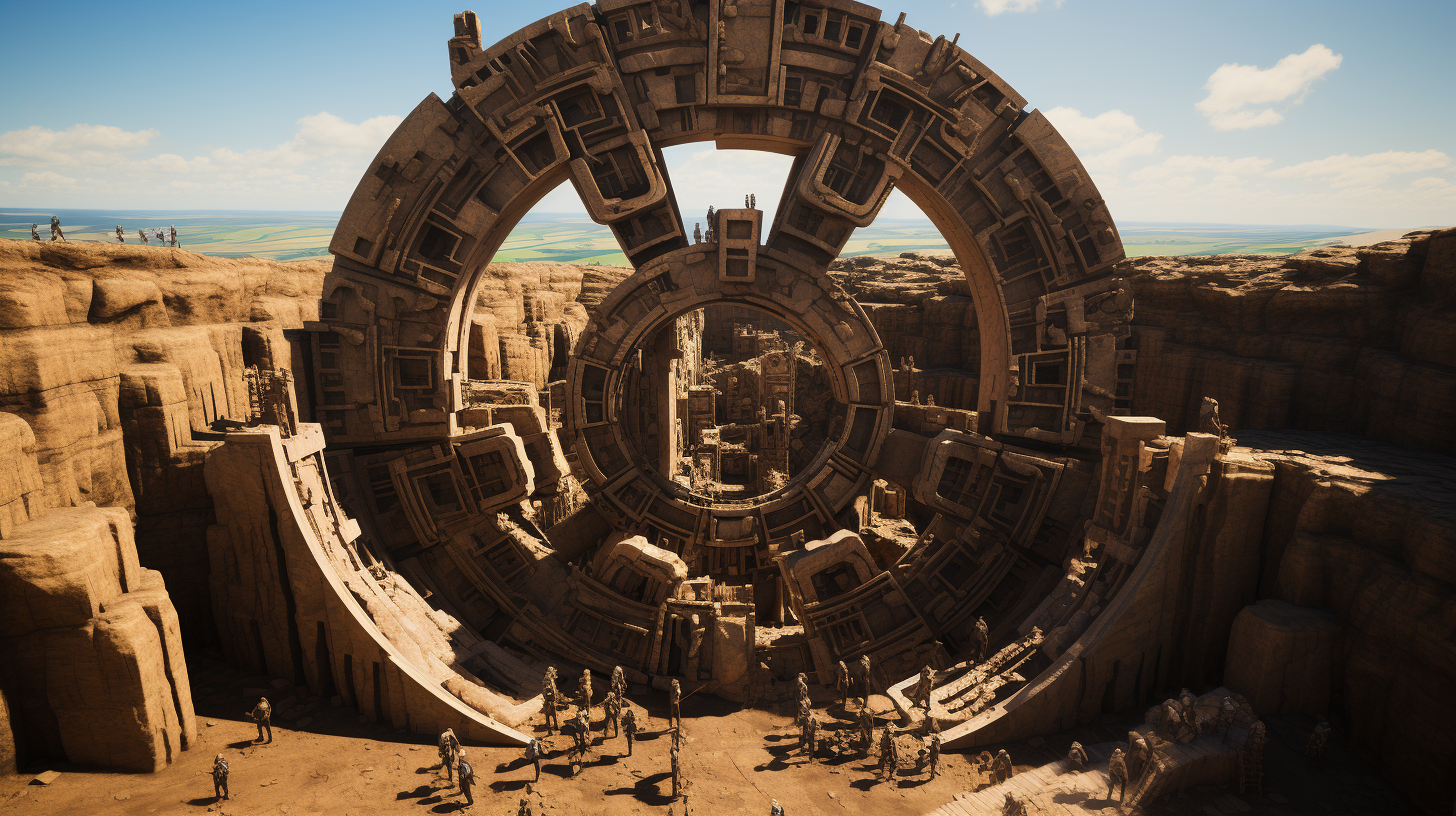The realm of history is often punctuated by remarkable discoveries that force us to reevaluate our understanding of the past. One such revelation emerged from the sands of southeastern Turkey, where archaeologists uncovered a site of unparalleled significance – Gobekli Tepe. This enigmatic temple complex, revealed in the History Channel’s Season 10 of “Ancient Aliens,” has triggered a paradigm shift in our comprehension of ancient civilizations and their potential connections to extraterrestrial beings.
A Glimpse into the Past
Radiocarbon dating places Gobekli Tepe’s origins at least 6,000 years before the advent of language and the conclusion of the last ice age. The scale and sophistication of this complex defy conventional wisdom about the capabilities of ancient hunter-gatherer societies. The monumental task of quarrying, carving, and erecting massive stone pillars, some weighing up to 50 tons, speaks to a level of organization and cooperation previously thought impossible for that era.

The Birthplace of Temples
Gobekli Tepe holds a unique distinction as the birthplace of the world’s first temples. This revelation challenges our perception of prehistoric societies, dispelling the notion that they were mere primitive wanderers. The elaborate carvings on the stone pillars, depicting animals, reptiles, and insects, hint at a deeper spiritual and cultural understanding that belies our preconceptions. Could these carvings represent more than artistic expressions? Could they be records of encounters with otherworldly beings?
The Urfa Man: A Glimpse into Ancient Anomalies
Intrigue deepens as we venture six miles from Gobekli Tepe to discover the Urfa Man, a life-size statue from the same period. This enigmatic figure wears peculiar clothing that bears a resemblance to advanced space attire. With an appearance that defies convention, the Urfa Man fuels speculations about a pre-flood civilization or even extraterrestrial influence. Could this peculiar representation be a clue to uncovering a lost chapter of our history, one that involves beings from beyond our planet?
Echoes of the Extraterrestrial
The presence of seemingly unconventional humanoid figures and carvings across the globe begs a tantalizing question – were these ancient societies influenced by extraterrestrial beings? The colossal Olmec heads, the enigmatic Easter Island statues with elongated heads, and the recessed courtyard in Tiwanaku, all suggest a recurring motif of humanoid figures with unconventional features. Could these anomalies be indicative of extraterrestrial visitations or advanced civilizations predating recorded history?
Video:
Unveiling the Mystery
The mysteries surrounding Gobekli Tepe and its related artifacts compel us to delve into uncharted territories of history and speculation. While mainstream science has often relegated such theories to the realm of mythology, the evidence from Gobekli Tepe and similar enigmatic sites invites us to entertain the possibility of ancient extraterrestrial interactions. As we continue to unearth fragments of our past, we must remain open to reinterpretation and exploration.
In a world where ancient legends meet modern technology, Gobekli Tepe beckons us to challenge the boundaries of what we think we know. The world’s oldest temple complex may just be the key that unlocks the secrets of a lost civilization and offers insights into our cosmic origins. The sands of time continue to reveal their treasures, urging us to reconsider the narrative of human history and our place in the cosmos.

24 thoughts on “Unveiling the Enigma of The Oldest Temple: A Gateway to Ancient Alien Theories”
Comments are closed.